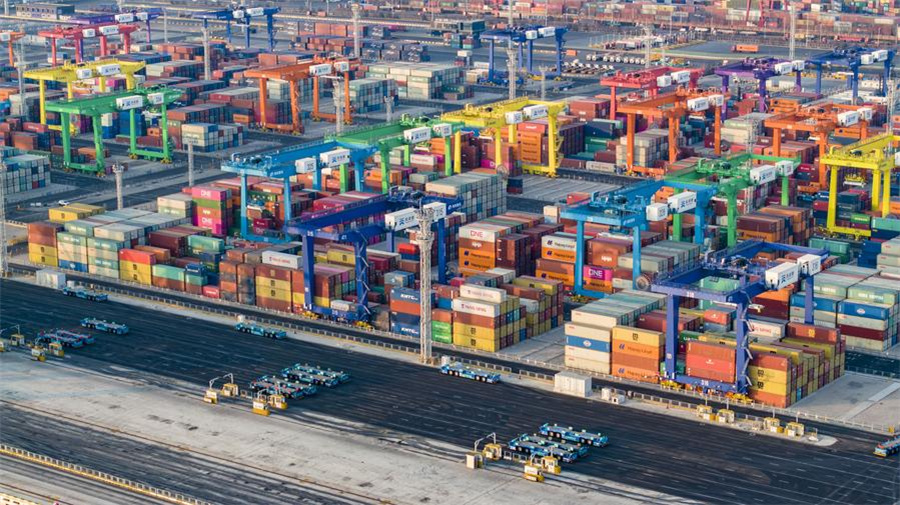China's shipbuilding industry soars in H1, solidifies global leading position

An aerial drone photo taken on Feb. 2, 2024 shows the smart zero-carbon terminal of Tianjin Port in north China's Tianjin. [Xinhua/Zhao Zishuo]
BEIJING -- China's shipbuilding industry saw significant growth in the first half of this year, reinforcing its global leading position, according to data released Tuesday by the Ministry of Industry and Information Technology (MIIT).
From January to June, China completed shipbuilding projects totaling 25.02 million deadweight tonnes (DWT), an increase of 18.4 percent compared to the same period last year. New orders surged to 54.22 million DWT, reflecting a remarkable year-on-year growth of 43.9 percent.
By the end of June, the order book stood at 171.55 million DWT, up 38.6 percent from the previous year.
The MIIT's data also demonstrates China's dominant position in the global shipbuilding market. In the first half of this year, the country's shipbuilding completions, new orders, and order book as measured by DWT accounted for 55 percent, 74.7 percent, and 58.9 percent of the global totals, respectively.
In 2023, the three key market indicators stood at 50.2 percent, 66.6 percent, and 55 percent.
Despite the uncertain global economic outlook and the impact of trade protectionism and de-globalization on the shipbuilding industry, China's economy remains resilient, and the recovery trend in maritime trade continues, said Cao Bo, deputy director of the statistical information department of the China Association of the National Shipbuilding Industry (CANSI).
"In June this year, as the shipbuilding industry continued to recover, the new ship price index climbed to 187.23, an increase of 9.5 percent year on year, reaching its highest level since September 2008," Cao added.
According to CANSI's statistics, the main business income of China's large-scale shipbuilding enterprises increased by 31.5 percent year on year in the first quarter of this year.
The shipping industry is a critical pillar of global economic development and serves as a barometer of China's macroeconomic health. This year, several of China's ports have shown continuous growth in throughput.
For instance, from January to June, Ningbo-Zhoushan Port, the world's busiest port in terms of cargo throughput, handled 708 million tonnes of cargo, a 4.2 percent year-on-year increase, and 19.165 million twenty-foot equivalent units (TEUs) of containers, up by 8.4 percent. Guangzhou Port is estimated to have processed 12.206 million TEUs, representing a 6.3 percent growth.
Wu Chungeng, chief planner with the Ministry of Transport, noted that in 2023, China's waterway cargo transport volume remained the highest in the world and continued to grow steadily in the first half of this year.
"Maritime transport handles about 95 percent of China's foreign trade cargo," Wu said at a recent forum. "China's international shipping volume now accounts for nearly one-third of the global total, further highlighting its role as a ballast in international shipping."
























